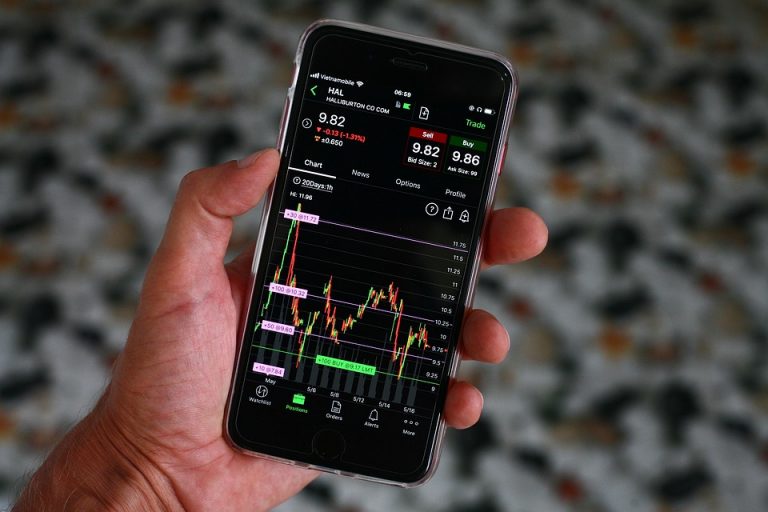Trend reversal indicators are your compass in the tumultuous sea of trading. Understanding these indicators can mean the difference between a fruitful investment and a costly mistake. If you’re serious about trading, you need to master these tools. They help you spot when a price trend is about to change direction, allowing you to make informed decisions that can boost your profits and protect your portfolio.
Contents
- What Are Trend Reversal Indicators?
- The Importance of Trend Reversal Indicators
- 1. Moving Averages
- 2. Relative Strength Index (RSI)
- 3. MACD (Moving Average Convergence Divergence)
- 4. Candlestick Patterns
- 5. Support and Resistance Levels
- 6. Fibonacci Retracement Levels
- 7. Stochastic Oscillator
- 8. Volume Analysis
- 9. Average True Range (ATR)
- 10. Trendlines and Channels
- Putting It All Together
- Bottom Line
- FAQ
What Are Trend Reversal Indicators?
Trend reversal indicators are signals that suggest a price trend may be about to change. They are crucial for traders who want to enter or exit positions at the right time. Recognizing these indicators allows you to ride the waves of the market instead of getting swept away. But why do they matter? Because timing is everything in trading. If you can anticipate a reversal, you can capitalize on new opportunities and minimize losses.
The Importance of Trend Reversal Indicators
- Maximize Profits: By identifying potential reversals, you can enter trades just before a price surge or exit before a downturn.
- Minimize Losses: Knowing when to exit can save you from significant losses.
- Build Confidence: Understanding these indicators gives you the knowledge to make informed decisions, boosting your confidence as a trader.
1. Moving Averages
Moving averages smooth out price data to identify trends over specific periods. When the short-term moving average crosses above the long-term moving average, it signals a bullish reversal. Conversely, a bearish reversal is indicated when the short-term average crosses below the long-term average.
- Types: Simple Moving Average (SMA) and Exponential Moving Average (EMA).
- Use: Look for crossovers to spot potential trend reversals.
2. Relative Strength Index (RSI)
The Relative Strength Index (RSI) is a momentum oscillator that measures the speed and change of price movements. Ranging from 0 to 100, an RSI above 70 indicates an overbought condition (potential reversal down), while below 30 indicates an oversold condition (potential reversal up).
- How to Use: Look for RSI divergences where the price makes a new high or low, but the RSI does not.
3. MACD (Moving Average Convergence Divergence)
The MACD is a trend-following momentum indicator that shows the relationship between two moving averages of a security’s price. When the MACD line crosses above the signal line, it suggests a bullish reversal, and a cross below indicates a bearish reversal.
- Components: MACD line, signal line, and histogram.
- Interpretation: Watch for crossovers and histogram trends.
4. Candlestick Patterns
Candlestick charts are powerful tools in technical analysis, revealing price action over time. Certain patterns, like the hammer, shooting star, and engulfing pattern, can signify impending reversals.
- How to Use: Observe patterns at key support and resistance levels.
5. Support and Resistance Levels
Support and resistance levels are key price levels where the market tends to reverse. Support is where the price tends to find a floor, while resistance acts as a ceiling. When prices breach these levels, it can indicate a potential trend reversal.
- Use in Trading: Identify these levels on your charts to anticipate potential reversals.
6. Fibonacci Retracement Levels
The Fibonacci retracement tool is based on the Fibonacci sequence and is used by traders to identify potential reversal levels. Key retracement levels—23.6%, 38.2%, 50%, 61.8%, and 100%—are used to predict where price might reverse.
- Strategy: Combine Fibonacci levels with other indicators for stronger signals.
7. Stochastic Oscillator
The stochastic oscillator compares a particular closing price of a security to its price range over a specific period. An oscillator reading above 80 indicates overbought conditions, signaling a potential bearish reversal, while a reading below 20 indicates oversold conditions, suggesting a bullish reversal.
- How to Use: Look for divergences with the price for confirmation.
8. Volume Analysis
Volume is a crucial indicator of strength behind a price move. An increase in volume during a price reversal can confirm its validity. Conversely, a reversal on low volume may not be reliable.
- Application: Combine volume analysis with other indicators to validate trends.
9. Average True Range (ATR)
The Average True Range (ATR) measures market volatility. A sudden increase in ATR can indicate a potential reversal. When combined with other indicators, it helps confirm the strength of a reversal signal.
- Tip: Use ATR to set stop-loss orders based on volatility.
10. Trendlines and Channels
Drawing trendlines and channels can help identify reversals visually. When a price breaks through a trendline, it may indicate a potential reversal. Maintaining awareness of these lines can enhance your market perspective.
- Implementation: Regularly update your trendlines to reflect current market conditions.
Putting It All Together
Understanding these 10 trend reversal indicators is crucial for your trading toolkit. They work best when combined with one another, providing multiple confirmations before making a trade.
Bottom Line
Trend reversal indicators are not just statistics; they represent opportunities for you to take charge of your trading journey. By mastering these tools, you can navigate the market with confidence, ready to seize every opportunity.
So, are you ready to enhance your trading skills? Dive deeper into these indicators and start applying them to your strategy today.
FAQ
1. How do I choose the right indicators for my trading style?
Consider your trading strategy—short-term or long-term—and select indicators that align with your goals.
2. Can I rely solely on indicators for trading decisions?
No, it’s essential to combine indicators with fundamental analysis and market news for well-rounded decision-making.
3. How often should I analyze trend reversal indicators?
Regular analysis during your trading sessions will help you stay updated on market conditions and make timely decisions.
For further reading, you might find these resources helpful:
Now go out there and make your trading dreams a reality!








